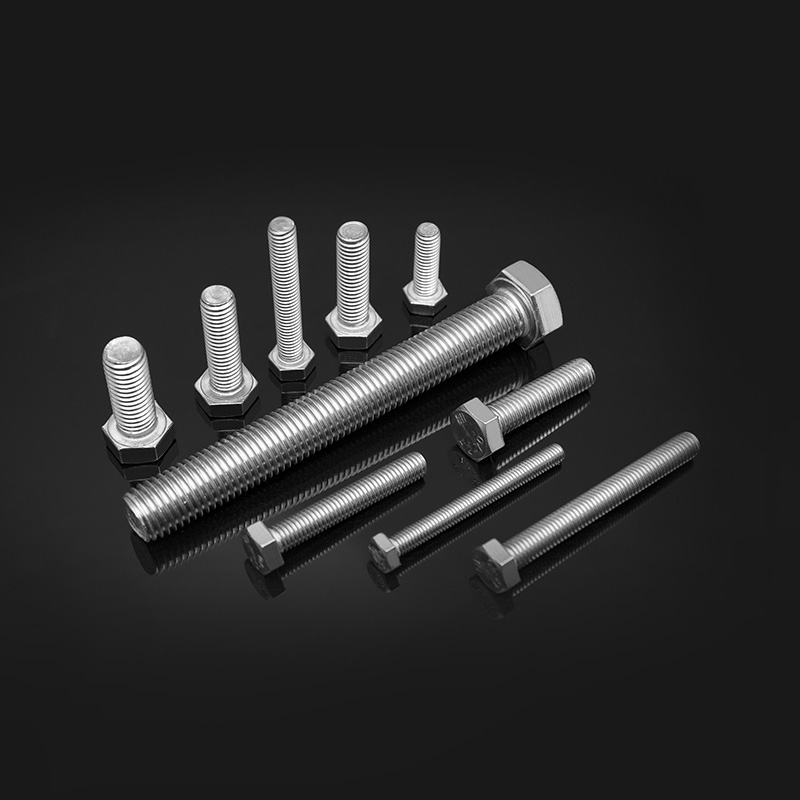+86 189 6101 2359
+86 133 6521 5663
+86 138 5268 6835
Stainless steel bolts stand as a cornerstone of modern engineering, offering exceptional corrosion resistance and strength where ordinary fasteners fail. These specialized bolts protect critical structures – from offshore platforms to medical devices – against degradation. Understanding their properties ensures optimal performance and longevity.
Why Stainless Steel Excels
Built-In Corrosion Resistance
Stainless steel naturally forms a protective chromium oxide layer on its surface. This "passive layer" self-repairs when scratched, providing continuous defense against rust, chemicals, and moisture. This makes it ideal for marine settings, food processing plants, and outdoor infrastructure exposed to rain or de-icing salts.
Strength and Durability
Despite being lighter than carbon steel, grades like 316 offer high tensile strength (70,000-100,000 psi). They maintain integrity in temperatures up to 870°C (1600°F), suiting industrial furnaces or engine components.
Hygienic and Aesthetic Benefits
Their non-porous surface resists bacterial growth, critical for pharmaceuticals and hospitals. The sleek, metallic finish also enhances architectural designs and consumer products.
Key Grades Demystified
304 (A2): The most common grade. With 18% chromium and 8% nickel, it handles indoor applications, kitchen equipment, and mild environments well. Avoid prolonged exposure to chlorides (e.g., coastal air or road salt).
316 (A4): Enhanced by 2% molybdenum. This "marine-grade" bolt resists pitting from saltwater, chlorine, and acids. Essential for boats, chemical plants, and coastal infrastructure.
Duplex (2205): Combines high strength (22% chromium, 5% nickel) with extreme chloride resistance. Used in offshore oil rigs and desalination plants.
410: A magnetic, heat-treatable grade for high-stress applications like valves. Less corrosion-resistant than 304/316; often requires protective passivation.
Critical Installation Challenges
Galling (Cold Welding): Friction during tightening can fuse threads. Prevent this by:
Applying anti-seize lubricant
Using slower installation speeds
Selecting bolts with molybdenum coatings
Stress Corrosion Cracking: Occurs when tension meets chlorides. Mitigate by choosing low-carbon grades (316L) or duplex steel in high-risk zones.
Galvanic Corrosion: When stainless contacts dissimilar metals (e.g., aluminum), electrolytic corrosion accelerates. Isolate with plastic washers or dielectric tape.
Best Practices for Longevity
Precise Torquing: Stainless steel has lower friction than carbon steel. Use manufacturer torque specs to avoid under/over-tightening.
Dedicated Tools: Iron particles from regular tools can embed and rust. Use stainless-steel-specific brushes and wrenches.
Passivation After Machining: Acid treatments restore the protective oxide layer if threads are cut or modified.
Regular Inspection: Check for crevice corrosion in joints or under washers, especially in humid environments.
When to Consider Alternatives
For ultra-high-strength needs (e.g., structural steel), high-grade alloy bolts may outperform stainless.
In extreme temperature-cycling environments, differing thermal expansion rates may cause loosening.
Highly abrasive settings may require hardened steel bolts with coatings.
Innovations on the Horizon
Super Duplex Grades (e.g., 2507) offer enhanced strength for subsea oil equipment.
High-Strength Variants (A4-80) achieve 800 MPa tensile strength for critical applications.
Nano-Coatings with graphene further boost corrosion resistance in aggressive media.
The Strategic Advantage
Stainless steel bolts deliver unparalleled lifecycle value despite higher upfront costs. By eliminating galvanizing needs, reducing replacements, and preventing corrosion-related failures, they safeguard operations across industries. Selecting the right grade – particularly 316 for harsh conditions – combined with proper installation techniques, makes them indispensable for infrastructure where safety and durability are non-negotiable. From suspension bridges to surgical instruments, these bolts prove that sometimes, the smallest components carry the greatest responsibility.

ThreadTolerance: 6gstandardDIN 13-15、DIN 13-12Rod diameter dd≤M20:A2-70、A4-70;M20<d≤M39:A2-50、A4-50;d≥M39:C3、C4;d<M39
See DetailsCopyright © Jiangsu Huajie Stainless Steel Products Co., Ltd. All Rights Reserved.
Stainless Steel Fasteners Manufacturers